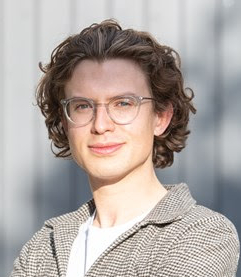Architecture student wins SLC national award

Harry Whitmore
An architecture student at Edinburgh University has won the Scottish Land Commission’s national student award for 2021.
Final year student Harry Whitmore will use the £1,000 award to undertake research into urban development and the role of community arts organisations to focus and drive re-use of vacant or derelict land.
He will research the regeneration model typified by the Stove Network, which played an integral role in initiating high street regeneration in Dumfries, and the community input into it, before carrying out an analysis of three arts-based community anchor groups in Edinburgh.
The winning proposal focuses on areas of the commission’s work such as models of land ownership and community-led regeneration of vacant or derelict land. It will also explore alternative routes to deliver land reform in urban areas.
Hamish Trench, CEO of the Scottish Land Commission, said: “We want to develop new approaches to make the most of Scotland’s land and help to build future research capacity to support land reform.
“Harry’s research focuses on land reform within urban environments, recognising that demand for housing and associated infrastructure is a key issue for Scotland’s recovery plans. The research will be a welcome addition to our work on tackling Scotland’s legacy of vacant and derelict land with the aim of finding ways to bring such sites back into productive use.
“The award is a great opportunity for students interested in land reform to work with us and explore issues, gather evidence and spark debate and understanding.”
Mr Whitmore said: “I moved to Scotland four years ago to study architecture at the University of Edinburgh and quickly fell in love with both the city and the nation. This research is important to me because the question of who gets to build what, and where, has come to motivate both my academic and design-based work during my time living here.
“I hope this project will act as a springboard for me to begin a career supporting community led development of the built environment, whether that be through research, activism, or design.”





